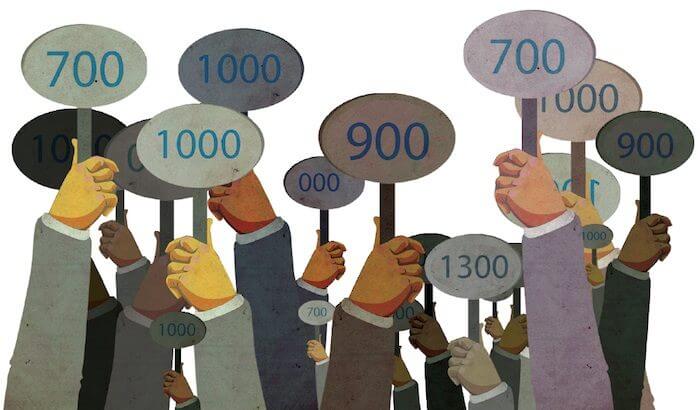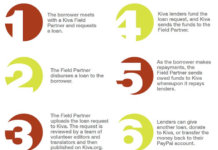Art appreciation and collecting is a passion that, through its visual and emotional impact, has the ability to enrich lives. The visceral response a collector has to a particular work of art is of great importance and can sometimes be so powerful that the desire to obtain it is best described as a compulsion. Increasingly, however, astute business leaders are also recognising the possible corporate benefits of art collecting, which can include corporate responsibility initiatives, a means to inspire employees in the work place, or a way of promoting the company image and branding by association. Some of today’s greatest art collections have been assembled by family businesses. In this article, Robin Woodhead, Executive Vice President and International Chairman of the global art auction house Sotheby’s, explores the benefits of creating an art collection and raises the crucial considerations for doing so.
Art’s Role in Corporate Social Responsibility
Family businesses all over the world have been known to play a crucial role in furthering the arts and the art market. The Arabian Gulf region, for example, provides some excellent examples of family businesses that have identified investment in art as a means to enhance business:
The Abraaj Group Art Prize, the world’s largest of its kind, reflects the Naqvi family’s desire for the Dubai-based investor firm to channel ‘giving back’ to the community through art. Not only have they made their world-class private art collection, which was assembled over the course of many years open to the public but family has gone one step further by encouraging the next generation of artists in the MENA region through awarding a generous annual prize.
[ms-protect-content id=”4069, 4129″]
Another example is set by the Jameel family in Saudi Arabia that has been active on two continents, philanthropically refurbishing the renowned V&A gallery in London in the family’s name, as well as initiating a programme to restore the publicly displayed sculptures on the Jeddah Corniche.
Renowned property developer, Professor Nasser D. Khalili, has amassed the greatest privately owned collection of Arts in the Islamic world over the course of forty years. The view that wealth brings responsibility with it has driven him to invest in preserving as well as promoting art and art scholarship to a broader audience. Khalili sees himself as a ‘custodian’ rather than an owner of the extraordinary objects in his collection, and, in addition to the Khalili Family Trust lending works to international blockbuster museum exhibitions, in 2008, he exhibited the first comprehensive display of Islamic art ever staged in the Middle East in Abu Dhabi.
Reaping the Financial Rewards of Corporate Investment in Art
These examples of families and individuals who have created art legacies for the next generation whilst simultaneously ‘giving back’ to the wider community, show some of the many rewards that businesses can reap from investing in art. One of my favourite examples of a collection that was formed for reasons of corporate responsibility but ended up becoming an extraordinarily shrewd investment is the BAT collection (British American Tobacco Netherlands).
This is the story of the Dutch tobacco company, Turmac, and how it built a collection of more than 1000 works created by living artists from over 40 countries. In the 1950s, Alexander Orlow, the company’s Managing Director, decided to put his love for abstract art to industrial use. He wanted to improve the company’s work environment, raise the spirits of his dedicated employees, and year by year built a world-class collection of large, colourful contemporary works specifically chosen to be shown in the factories above the machinery providing inspiration and stimulation. Crucially, his acquisition choices were astute.
In 2010, following a takeover of Turmac, British American Tobacco decided to sell the art collection. It sold for more than €13 million – the highest sum for a sale of Contemporary Art in the history of the Dutch art market. This example is particularly useful since we see not only the short-term rewards in the context of the organisation, but also the long-term financial rewards.
Corporate investment in art has grown significantly since the 1950s, and the sales by international auction house Sotheby’s of corporate collections provide a compelling illustration of the broader picture of such corporate investment: From 2006-2009 Sotheby’s UK sold more than $62m of art from corporate collections, and in the three years to the end of 2012, this figure rose to more than $218m.
Positive Brand Association
With the now booming business for product placement, perhaps a more tasteful approach to positive brand association is achieved by companies who garner good publicity for their company through association with their investment in art: Whether it is the prestige of corporate sponsorship of arts events or galleries, or establishing an art collection that generates media coverage and critical acclaim that reflects positively on the corporation for its visionary creativity.
Of course, such an association is less quantifiable, but it is certainly an effective tool for etching a particular brand into popular memory and could lead to a more lasting impact than the company can achieve through the promotion of its own service or product.
Education at the Core of Collecting Art
Whatever the drive to collect, study and research are essential, and despite the expense of time invested in this process, the collector can gain great satisfaction from it; from the thrill of the chase through to the pleasure in acquiring. In time, a notable collector – particularly one who specialises in one area of art – will gain an expertise similar to the art specialist through the continuous connection to the active market.
Following the buying and selling of art will not only heighten the collector’s awareness of market trends and values, but also allow the collector to upgrade the quality of the collection as expertise and knowledge deepen. This process of education is very much part of the experience of buying at auction, since auction houses have at their disposal the greatest pool of art expertise spanning a vast array of collecting categories, unrivalled experience in handling art, as well as access to leading scholars in any field of collecting when necessary.
Where to Buy and Why
There are of course a number of options when it comes to sourcing works of art to buy: at auction, from a dealer, or at one of the many international fairs which have become a mainstay of the art world calendar. Each one of these options has its merits, but transparency has always been the unique selling point of the auction, where you can see the true market value of a work on the day as the sale unfolds, based on how many bidders are prepared to fight to acquire it and how far they will go to do so.
A further advantage of auctions is that the pre-sale exhibitions as well as the sales themselves provide an opportunity to sharpen one’s identification and discernment skills – without the need to spend money. As well as being a thrilling experience that at times resembles a theatrical performance, attending an auction as a spectator is a chance to use the saleroom as a place to learn how to distinguish quality and value as well as obtain get an accurate indicator of the current state of a particular sector of the art market.
While auction sales are essential to a healthy market since they provide publicly reported prices for art, there are nevertheless many reasons individuals may choose to buy and sell works away from the public eye of the auction process. A private sale is an alternative route, which offers confidentiality, flexibility and immediacy – factors, which may be paramount for those who wish to transact in this way. Private sales are, in essence, exercises in matchmaking: Sourcing works on demand or finding and immediate buyers for someone who is selling.
Steps to Starting a Collection
Just as art experts must critique a work of art to assess its quality and worth as a way to determine its saleability, collectors are advised to approach works of art with crucial questions beyond the emotive response to how much you like the object that is front of you. What is the work’s provenance? How much has it sold for previously? Has the market fluctuated in its response to such a work over time? What condition is this work in? How does this work fit in with what is currently in my collection? These are just a few of the initial considerations to be followed by the more practical questions such as where this work of art will be displayed or stored and what are the implications when it comes to the work’s size, condition, maintenance and insurance. If the work is to be exported from the location of sale to another, one must determine the international regulations for moving items of cultural relevance from one country or continent to another.
The growing media focus on the performance of certain sectors of the Art Market might lead one to believe that art is one of the safest and best performing asset classes on offer. While it’s true that strong global demand for the finest art – in particular Contemporary and Impressionist and Modern works – has driven prices ever higher over the last five years, it would be simplistic to view the art market as just an alternative stock market.
There are undoubtedly blue-chip artists that collectors feel safe buying, but building a collection should not be viewed primarily as an investment vehicle. Art does not yield dividends and it cannot be bought or sold at the drop of a hat. It can, however, give great pleasure and it is guaranteed to provide fulfilment both intellectually and socially. Successful entrepreneurs who turn to collecting art have the advantage of being able to bring their business skills and acumen to the process, and together with a passion for the art of choice, this can provide a potent combination in the assembling of a unique collection.
Tharawat Magazine, Issue 20, 2013
[/ms-protect-content]














